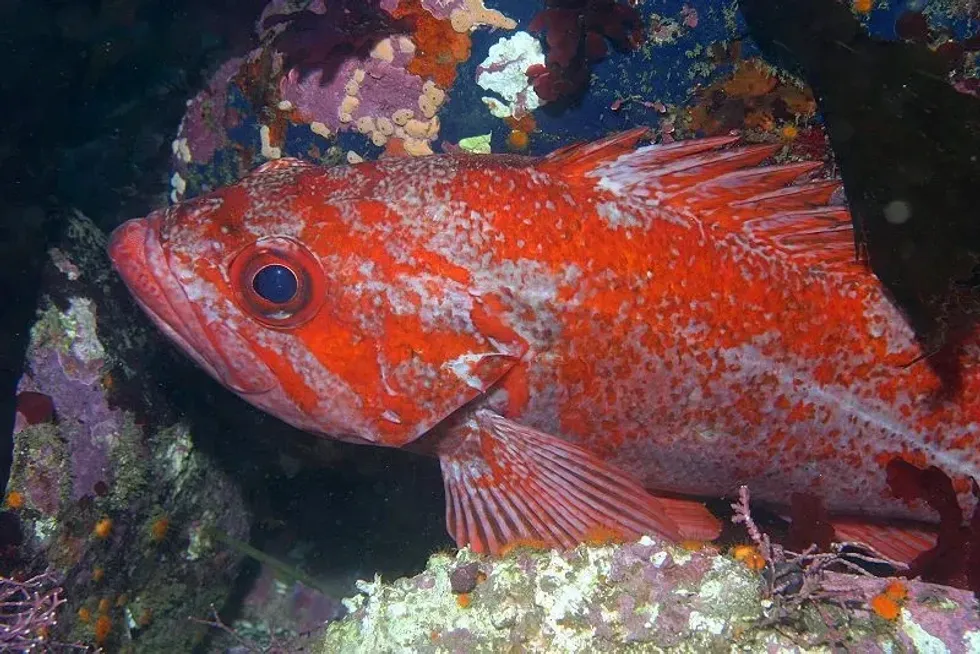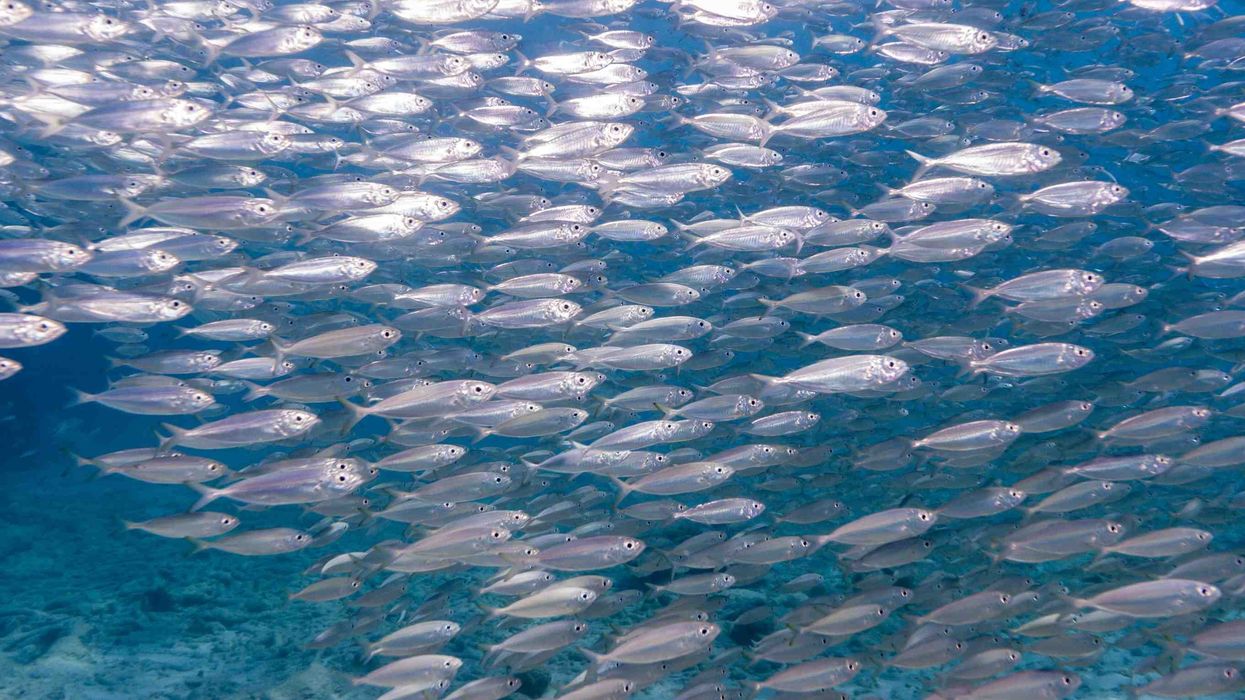The dusky rockfish (Sebastes ciliatus) gets its name from its appearance as this type of fish are quite interesting.
Being a part of the biological class of ray-finned fish, also known as the Actinopterygii, the dusky rockfish (Sebastes ciliatus), or the S. ciliatus is a fairly deep-water sea and ocean fish that prefers the salted waters of these water bodies.
In fact, it was only recently that the S. ciliatus (Sebastes ciliatus) was distinguished from the Sebastes variabilis. Even though both of these species are very close in relation to one another, the S. ciliatus (Sebastes ciliatus) is known to be darker and to swim in shallower waters than the S. variabilis.
The dusky rockfish of the Scorpaenid genus is also caught for food as well as in the capacity of a gamefish.
Typically observed in the North Pacific Ocean, the Gulf of Alaska and in the Bering Sea, this species of fish is also paid close attention to with the help of fisheries which are overseen by the Alaska State Agencies along with the US Federal Agencies.
Here are some of the most interesting facts about the North Pacific rockfish. For more relatable content, check out these codfish facts and bonito fish facts for kids.
Dusky Rockfish Interesting Facts
What type of animal is a dusky rockfish?
The dusky rockfish (Sebastes ciliatus), like black rockfish, are fish that belong to the specific biological phylum of Chordata. This means that the S. ciliatus (Sebastes ciliatus) fish are a member of the classification of vertebrate organisms that are born as eggs, convert into larvae, and then grow into adult organisms.
The weight of a dusky rockfish doesn't exceed 4 lb (1.8 kg).
What class of animal does a dusky rockfish belong to?
The dusky rockfish (Sebastes ciliatus) belongs to the biological class of the Actinopterygii owing to the fact that it has ray-fins, which are characteristic of this biological class.
How many dusky rockfishes are there in the world?
There are no specific details about the total population of dusky rockfish (Sebastes ciliatus).
Where does a dusky rockfish live?
The dusky rockfish from the genus Sebastes lives in the oceans and seas of the world.
What is a dusky rockfish's habitat?
A dusky rockfish’s habitat comprise different types throughout its lifestyle like the S. ciliatu, with each one corresponding to the needs of that phase in the life of the S. ciliatus. Typically, the dusky rockfish distribution is found at depths of 328-656 ft (100-200 m) in ocean or sea waters.
The S. ciliatus (Sebastes ciliatus) as compared to the S. variabilis are found in comparatively shallow waters.
The older dusky rockfish generally occupy the deeper parts of the water while the younger ones occupy the shallow parts. Their habitat also comprises their prey which includes crustaceans and smaller fish along with shrimp.
Who do dusky rockfishes live with?
Dusky rockfish live in species groups that can grow to have about 40 members in their habitats.
How long does a dusky rockfish live?
As per description by experts, a dusky rockfish has a general life expectancy of up to 65 to 70 years of age.
How do they reproduce?
The dusky rockfish only achieves sexual maturity at the age of five to seven years. Belonging to the genus of Sebastes, the dusky rockfish reproduces by internal fertilization after which it gives birth to its young ones.
Fish that engage in this form of reproduction are known to be viviparous. Months after being fertilized by the male dusky rockfish’s sperm, the female releases in excess of millions of larvae, of which only some survive.
What is their conservation status?
The dusky rockfish only has one potential threat as of now and that is overfishing. Having said that, the conservation status of the dusky rockfish is Not Evaluated by the IUCN.
Dusky Rockfish Fun Facts
What do dusky rockfish look like?
Dusky black rockfish derive their name from their dusky appearance which is the result of a dark blue and black color, with different stripes and contents taxonomy. Being a member of the Actinopterygii, the S. ciliatus black rockfish have ray fins that run across their head spines and extend into rounded anal dorsal fins from their jaw.
With females of the black rockfish species measuring almost the same as their male counterparts, the S. ciliatus is a species that displays similar growth parameters in both fish of the sexes.

* Please note that this is an image of a bocaccio rockfish, not a dusky rockfish. If you have an image of a dusky rockfish, please let us know at hello@kidadl.com.
How cute are they?
In terms of description, dusky black rockfish are not particularly cute but can be extremely beautiful to look at due to their dark color hues and ray fins that make them look spectacular.
How do they communicate?
When put together in a shelf rockfish fisheries, they mainly communicate by wagging their fins and show some communication through their body.
How big is a dusky rockfish?
As per the present growth model, a dusky black rockfish can grow as big as 1.7 ft (0.5 m) in general, however, there have been reports of dusky rockfish as big as 3 ft (0.9 m). With a thick body, the dusky rockfish can be as big as a human child or a small dog!
How fast can a dusky rockfish swim?
There are no specific details about the swimming speed of dusky black rockfish. These species of rockfish have a swim bladder that allows them to control their speed.
How much does a dusky rockfish weigh?
A dusky black rockfish generally weighs about 3-4 lb (1.4-1.8 kg). The species of rockfish are small in size and their weight doesn't exceed 4 lb (1.8 kg).
What are their male and female names of the species?
No specific names have been allocated to the male and females of the S. ciliatus species of rockfish.
What would you call a baby dusky rockfish?
A baby dusky black rockfish is usually in the form of a larva and as they get older, they are given names like a juvenile S. ciliatus.
What do they eat?
Dusky species of rockfish, being omnivorous, eat both underwater marine vegetation as well as other marine creatures such as greenlings, shrimp, and crustaceans, specifically crabs. They feed in the water column on zooplankton and Dungeness crab larvae.
Are they dangerous?
There have been little to no reports or studies that tell us that the dusky rockfish is, in any way, dangerous toward humans. Therefore, it is safe to assume that they are not dangerous.
Would they make a good pet?
The dusky rockfish would not make for a good pet owing to its size and the fact that it requires a certain amount of water pressure to be able to survive. Being a fairly deep-water ocean fish, it is hard for them to survive in an artificial setup that does not match their physical and biological requirements.
Did you know...
They are fish popular for their meat and are often confused with red snappers.
As per Fisheries and Oceans Canada, Pacific Biological Station, Canada, Bertalanffy growth function is used to explain fish growth as a function of the age of the fish in the North Pacific.
What is a dusky rockfish's survival mechanism?
These fish have venom on their spines which is used as a defense mechanism against predators.
Are dusky rockfishes endangered?
No, the species of S. ciliatus is not considered to be endangered. These fish have high populations, especially due to the existence of fisheries that breed them and preserve their population while also providing fish for food consumption.
That said, the one, most important threat that this species faces is overfishing.
The species is particularly vulnerable to overfishing practices and will become endangered if poor fishing practices are followed. As it stands today, the conservation has not been classified as an endangered or threatened species by either IUCN or any organization.
Here at Kidadl, we have carefully created lots of interesting family-friendly animal facts for everyone to discover! Learn more about some other fishes from our monkfish facts and walleye fish facts pages.
You can even occupy yourself at home by coloring in one of our free printable dusky rockfish coloring pages.
* Please note that the main image is of a vermillion rockfish, not a dusky rockfish. If you have an image of a dusky rockfish, please let us know at hello@kidadl.com.









